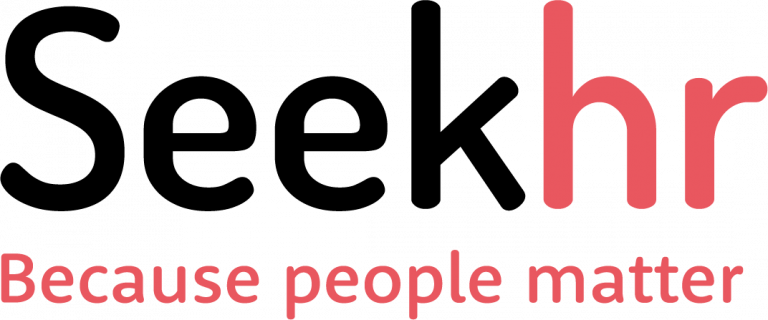No doubt you started this year thinking about new year’s resolutions. Many of us will have chosen goals around physical improvement — losing weight, abstaining from a vice.
However, this year, you might want to consider spending some time working on developing your personal brand and seeking out new career opportunities.
Career growth doesn’t necessarily mean moving on to a new job — it might mean a promotion, a pay rise, or new projects and challenges in your existing role. Here are five strategies for investing some time in your career search this January.
#1. Brainstorm your goals
Some people are lucky; they know exactly what they want to do with life from the moment they leave school or university. For most of us, though, it can take some time to get on the right track.
If you’re one of the many people not happy in your current job, but unclear as to what you’d truly like to do career-wise, then it may help to spend some time brainstorming your career goals and objectives.
Amanda Augustine, a careers adviser, suggests taking a three-part approach:
● Start by thinking about what you like/don’t like about your current work focusing on things like hours, length of commute, culture, workload, development opportunities, and so on.
● Next, think about your qualifications, skills, and talents. Ask yourself honestly what it is you’re best at and where you’ve got room for improvement.
● Finally, think about all of the possible jobs and careers that fit in with your preferences. Write down every job role that comes to mind, then start grouping them together according to the seniority, industry-type and so on.
#2. Re-assess your LinkedIn profile
Unless you’ve been living on a remote, internet-less island for the last five years, you can’t have failed to have notice that LinkedIn is a big deal when it comes to job searching. Today, there’s really no choice: if you want to advance your career and receive jobs offers you need to be on LinkedIn.
However, simply posting your CV online won’t do — in fact, it’s one of the biggest mistakes people make on LinkedIn. If you’re yet to join LinkedIn or your profile is in urgent need of some TLC, now’s the time to log on and implement some improvements.
Start with your profile picture, professional headline, and summary — Is your picture recent and professional looking? Does your headline accurately summarise what you do? Is your summary a concise overview of your skills, experience, and ambitions?
Once you’re ready, turn on LinkedIn’s newest feature: Open Candidates. It confidentially lets recruiters and hiring managers know that you’re open to job offers without making the news public.
#3. Seek out feedback
If you’re to advance in your career, then it’s essential that you’re open to receiving feedback from colleagues and managers. Look at constructive feedback as a learning moment to help you to improve and identify opportunities.
Don’t wait until your annual performance review to obtain feedback. Ask regularly, especially as you start and complete new projects. Writing on the Levo blog, Jessica Mattern, suggests steering away from general questions and asking for specific areas of feedback.
For example, rather than asking ‘How am I doing?’ try instead asking questions like: ‘What, specifically, can I do to better support our team’s goals?’, ‘Who should I seek to work with more closely?’ or ‘Are there any aspects of my working style that you you’d like to see change?’.
#4. Audit your skills and build a personal learning plan
If you want to advance your career this year and, specifically, move up the ladder, then it might be time to focus on learning some new skills.
‘One of the harder, but usually most effective, things to do is to pursue further education’, says Valerie Streif, a careers adviser. ‘Whether it is a continuing education course that gives you a special certification or taking university courses part time to earn another degree, usually more education translates to promotions and better jobs’.
Start by auditing your existing skills relative to the most commonly asked for competencies you regularly see in relevant job descriptions. Are there specific areas that you know you could improve on? Once you’ve identified these, look for opportunities — e.g. via MOOCs (free online courses), local evening classes, or one-off training sessions — to get up to speed.
#5. Seek out networking opportunities
You’ve no doubt heard it before: Networking is one of the best ways to land a new job. However, we’re often unsure of how to actively seek out new networking opportunities and how to make the most of them.
First, remember that networking isn’t all about turning up at events and striking up conversations with strangers. Far more often these days, it’s about going online, joining groups and forums that are relevant to your industry and asking and answering questions.
Online networking alone will only get you so far, however. Really effective networking requires leveraging personal connections. Don’t be afraid to ask for specific introductions with people at company’s you’re interested in learning more about or of making cold requests to talk via LinkedIn.
When it comes to successful networking the mantra that ‘if you don’t ask, you don’t get’ is absolutely key. Remember, few people will be offended by you genuinely seeking out their advice and expertise.
***
Are you an ambitious PA, EA, or business support professional looking to take your career to a new level? Executive Partnerships, a specialist recruitment consultancy just for EAs, PAs, and secretaries can help. Check us out at executivepartnerships.co.uk





